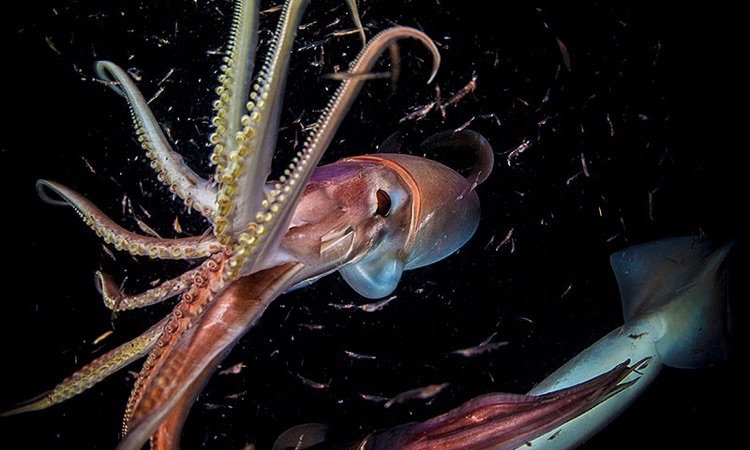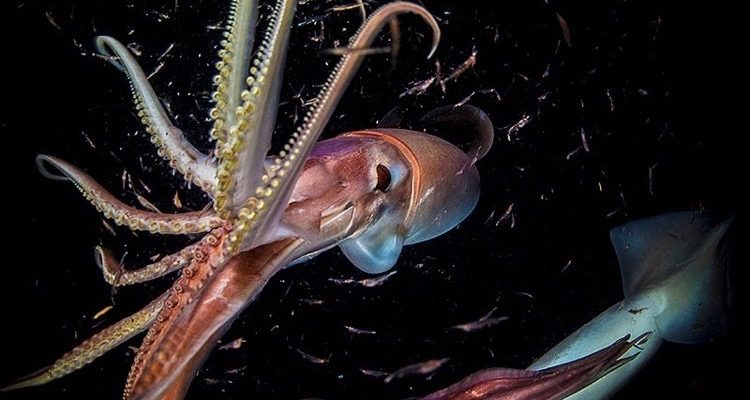
Imagine the ocean as a bustling city. In this city, the Humboldt squid acts like a dynamic delivery service. They’re not just swimming around aimlessly; they help maintain the balance of the ecosystem, serving as both predator and prey. So, let’s dive into the ocean’s depths and explore how these squids influence their environment and why their existence matters so much.
What is the Humboldt Squid?
The Humboldt squid, scientifically known as *Dosidicus gigas*, is a large cephalopod found primarily in the Humboldt Current off the coasts of Peru and Chile. They can grow up to 6 feet long and weigh around 100 pounds. These squids are famous for their erratic behavior and aggressive hunting tactics. They often hunt in groups, which adds to their dramatic presence in the ocean.
With their impressive speed and impressive camouflage abilities, Humboldt squids are agile hunters. They use their long tentacles and sharp beaks to capture their prey, which mainly consists of fish and smaller squid. You might picture them as the ocean’s version of cheetahs—fast, efficient, and highly effective predators.
However, they are not just feared hunters. These squids also face threats from larger predators like sharks and even humans. Their life cycle is a part of a greater food web, making them an integral component in the ocean’s intricate ecosystem.
How Humboldt Squids Affect Food Chains
In marine ecosystems, every creature plays a role, and the Humboldt squid is no exception. As a major predator in their habitat, they help regulate fish populations, ensuring that no single species dominates the ecosystem.
This balance is essential. If Humboldt squids were to disappear, their prey—like smaller fish—could rapidly increase in number. This overpopulation might lead to overgrazing of phytoplankton, the foundational food source in the ocean. In a way, you can think of the Humboldt squid as a natural check on fish populations, much like how apex predators maintain balance in terrestrial ecosystems.
Furthermore, Humboldt squids are also prey for various larger marine animals, like sharks and sea lions. Their presence in the food chain supports these predators, showcasing how interconnected marine life really is. So, when you hear about the plight of the Humboldt squid, remember, it’s about more than just the squid itself; it’s about the entire ocean ecosystem.
The Role of Humboldt Squids in Nutrient Cycling
You might not think about it, but squids like the Humboldt also contribute to nutrient cycling in the ocean. When they eat, they digest food and release waste that adds nutrients back into the water. These nutrients are essential for phytoplankton growth, which forms the basis of the marine food web.
Think of this as a cycle of giving. Humboldt squids consume nutrients, and through their waste, they return them to the ocean. This interaction not only feeds other organisms but also helps maintain the water quality. Without this process, our oceans could face nutrient deficiencies that could disrupt entire ecosystems.
Moreover, when Humboldt squids die, their bodies become a food source for scavengers and contribute to the sediment on the ocean floor. This natural recycling is vital for maintaining healthy marine environments.
Human Interaction and Its Impact on Humboldt Squids
Humans have a complicated relationship with the Humboldt squid. On one hand, these squids are a popular catch for fishermen due to their size and culinary value. On the other hand, overfishing can severely impact their populations, causing ripple effects throughout the ecosystem.
Commercial fishing, which often targets specific species, can lead to an imbalance in the food web. If squids are overharvested, their predators might struggle to find food, and their prey could explode in numbers, as we discussed earlier. It’s a delicate balance that requires careful management to ensure sustainability.
Furthermore, environmental changes, like rising ocean temperatures and pollution, also affect Humboldt squids. Warmer waters can change their distribution and breeding patterns, making it harder for them to thrive. Protecting these creatures and their habitats is essential for preserving ocean health.
Conservation Efforts for Humboldt Squids
Given the importance of the Humboldt squid in marine ecosystems, conservation efforts are vital. Marine biologists and environmental organizations are working to study and protect these squids and their habitats.
Regulations on fishing, creating marine protected areas, and promoting sustainable fishing practices are steps being taken to protect the Humboldt squid population. These measures not only help the squids but also support the broader marine ecosystem.
Additionally, public awareness campaigns are crucial. The more people know about the role of Humboldt squids, the more likely they are to support conservation initiatives. Education can foster a greater appreciation for these squids and the health of our oceans.
The Future of Humboldt Squids in the Ecosystem
Looking ahead, the future of Humboldt squids—and the ecosystems they inhabit—depends on our actions today. With ongoing research and conservation efforts, there’s hope for maintaining healthy populations of these remarkable squids.
Their adaptability gives them an edge, but it’s not limitless. Balancing human needs with the health of the ocean requires a combination of science, policy, and community involvement.
The story of the Humboldt squid is a reminder of the interconnectedness of life and the delicate balance of ecosystems. Protecting one species can have a profound impact on the entire marine community.
In conclusion, the Humboldt squid might be just one of many creatures in the ocean, but its role is undeniably significant. As we continue to learn more about these squids, let’s remember that their existence is a vital thread in the fabric of marine life. By supporting conservation efforts and sustainable practices, we can help ensure that these fascinating creatures continue to thrive in the ocean for generations to come.

